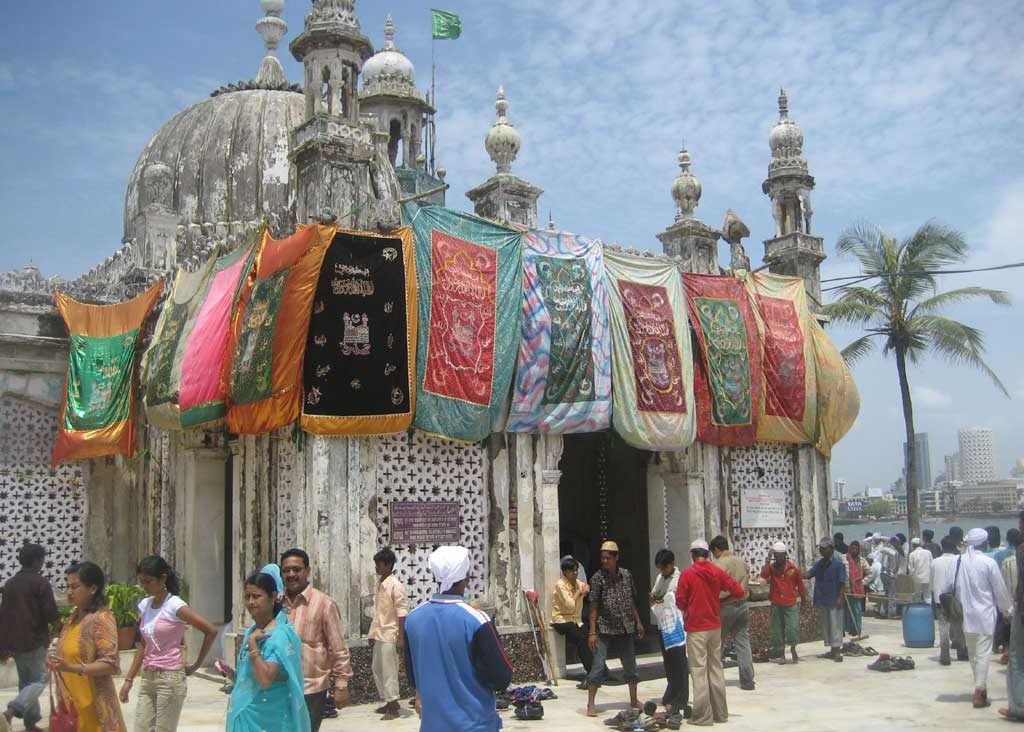Download PDF: Martin and Whitmore, Reflections on Intersections
Welcome to the third issue of Practical Matters. In this issue, we highlight Ethnography and Theology. In the “doing” of theology, a turn to ethnography is gaining momentum. Many scholars of religion who did not begin their scholarly careers as anthropologists now count themselves ethnographers, or at least state that they employ ethnographic methods.
To be sure, the interplay of the endeavors of theology, ethnography (and anthropology), and the academic study of religion are not new in the strictest sense. W.E.B. Du Bois constructed one of the earliest paradigms for understanding African American religious traditions, theology, and orientation by combining sociology and ethnographic data. His essay “On the Faith of the Fathers” stands as a pioneering example of such work in the twentieth century. The writings of Zora Neale Hurston, particularly The Sanctified Church, also stand as towering examples of the interplay of ethnographic and theological endeavors. Anthropological approaches to religion have been well established in the study of specific religious traditions for decades as well. Fruitful Journeys: The Ways of Rajasthani Pilgrims, by Ann Grodzins Gold, is a classic text for the study of Hinduism.1 Yet there is something new about the ways in which ethnographic frames have begun to participate in the theological endeavor.
Many scholars of theology have arrived, and continue to arrive, at the view that to better understand how human subjects experience their lives, rituals, and religious/cultural practices “it is necessary to observe people in everyday life and see how cultural meanings are brought by them to bear on their actual, practical concerns.”2 The scholarly interest of recent decades on “lived religion” in the context of North America and Britain is doubtless an important factor in this interdisciplinary development. Such interest attests to a growing scholarly awareness that it is the actions and lives of human subjects in context that animate the truth-values of belief systems and cultural practices.3
This issue aims to push forward the interdisciplinary conversation around the intersections of ethnography and theology. Oftentimes it feels like scholars who study religion and theology from different disciplines function like several ships passing in the night without any knowledge of the others’ presence. It is clear that this intersection is already occurring in vibrant ways and that it will deepen and broaden in the coming years. However, aspects of this intersection remain unclear. We are still learning what scholarship looks like at these intersections, and it is somewhat uncertain what scholars from different disciplinary backgrounds think about such work. Engagement with the practice of ethnography functions as a sounding board for how such interdisciplinary conversations and work might proceed.
Our agenda for this issue, then, is to provide a much-needed venue for critical conversation and dialogue surrounding the issues of ethnography and theology. In our view several themes frame the contents of this issue. First, many of the authors in this issue investigate their relationships to what we, the issue editors, would like to suggest are the complementary modalities of the “ethnographic” and the “normative.” We offer this binary as an intentional alternative to others such as “subjective-objective” or “qualitative methods-theological methods”.
Second, we would underscore that in the pages of this issue you will find numerous operative understandings of what ethnography is. For some, ethnography is simply another tool of qualitative data collection that furnishes data for the theological endeavor. For others, ethnography itself, particularly in the form of participant observation, constitutes both the core practice of an entire discipline and implies an existential orientation to the human condition no less ultimate than what the category of theology might imply for a theologian.
Third, this issue registers the transformative potential of the ethnographic endeavor for all parties involved. That is to say, the doing of ethnography is itself a form of human relationship and encounter that has significant scholarly and existential implications. Finally, working with and writing about living people in context raises questions of responsible engagement and representation that, especially in the age of the Internet, constitute a relatively new sphere of praxis for scholars already engaged in the familiar questions of justice, virtue, and scholarly integrity. Digital scholarship enables scholars both to access and transmit relevant knowledge and information more quickly than ever; possibilities exist to utilize new media to investigate and chronicle religion and religious practices across space and time in an unprecedented manner.
Features
Our “Features” section explores the transformative potential of ethnography for all parties involved and the diversity of views on the relations of the ethnographic and theological endeavors. The first piece takes as its focus a project, entitled “Exploring Global Feminist Theologies in Postcolonial Space,” designed around the combination of African feminist/womanist theological learning, volunteer service, and ethnographic practice in the context of an Internally Displaced Persons camp outside of Nairobi, Kenya. In their essay “Listening to Experience, Looking Towards Flourishing: Ethnography as a Global Feminist Theo/ethical Praxis,” Melissa D. Browning, Edith Chamwama, Eunice Kamaara, Sussy Gumo Kurgat, Damaris Parsitau, Emily Reimer-Barry, Elisabeth Vasko, and Jeanine Viau reflect on the ways in which this project embodied the dual commitments of substantively and specifically encountering women’s experiences and thinking through these experiences with a commitment to postcolonial, feminist/womanist theological questions. In her film, “Listening to Experience, Looking Towards Flourishing,” Melissa Browning then takes the viewer through the same terrain from a different angle, offering one of several examples in this issue of how different media generate different pathways of approach, even to the same topic.
What can anthropologists, scholars of religious studies, and theologians say to one another about the doing and creating of ethnography? What are the contributions of ethnographic fieldwork to the study of religion, ritual, and theology? What are the ways practical and systematic theologians might use and engage ethnographic data? Can the questions and discourses of theology and religious studies enrich the doing and creating of ethnography across disciplinary boundaries? To help illuminate these questions, we invited a group of scholars with both diverse and overlapping disciplinary perspectives and scholarly commitments to reflect on the relationships of the ethnographic and theological endeavors. In “Ethnography and Theology: A Critical Roundtable Discussion,” Don E. Saliers, Joyce Burkhalter Flueckiger, Dianne Stewart Diakité, and Don E. Seeman frame their respective remarks with the aim of beginning an on-line conversation. We hope you, the reader, will continue this conversation by writing in with your comments and questions. Your responses will then be published as part of the online Roundtable discussion.
Analyzing Matters
In “Analyzing Matters,” we find the work of scholars who incorporate the practice of ethnography into their scholarship in diverse ways: as a method that enriches narrative theological conversations; as a form of theological practice; and as a new method for engaging historical data, the lives of children, and the relationship between the particular and universal. Each piece illustrates a different way in which ethnographic practice informs a larger scholarly project. In his essay, “Stories Revisited,” John Senior examines his conversations with an Atlanta-based community organizer who frames her political activism as proceeding from the touchstone of her life as a Christian. He uses this example to reflect on the utility of putting Christian theological reflection concerned with the role of stories in people’s lives into conversation with ethnographic approaches that similarly investigate the narrative ways people frame their lives. Annie Hardison-Moody, in “Getting This off My Chest,” discusses how her ethnographic conversations with a woman in a homeless shelter in Atlanta might function as a form of “disruptive theological practice.” Such encounters, she suggests, may aid both participants in such conversations in “making a path” through a world in which evil and violence must be faced.
Tracey E. Hucks’ essay, “Perspectives in Lived History,” concentrates on the disciplinary implications of using ethnographic methods. A historian of religions, Hucks interrogates and reflects on the relationship of the history of religions and ethnography. The author reflects upon her fieldwork in African Diasporic Religions to illuminate the “disciplinary compatibility” of religion and ethnography. The author uses an ethnographic historiography of African Diasporic Religions to showcase how religion and ethnography can be utilized to analyze human experience and religious phenomena beyond discussions of the normative. For Hucks, ethnography and history of religions are modes that enable scholars to gain insight on African Diasporic religious practices, namely, how such practices possess various meanings and expressions across lived experiences.
Jennifer Beste’s essay displays the importance of attuning to practitioners’ voices and experiences in religious scholarship and theological debates, especially when those experiences are the often-overlooked voices of children. Her essay, “Children Speak,” stems from a qualitative research study of second graders concerning their experiences of the Sacrament of Reconciliation. By allowing the children’s voices to emerge through verbal and artistic means, Beste shows the value of engaging in multiple forms of ethnographic data collection. Informed by her ethnographic engagement with their world, Beste draws conclusions concerning the moral, spiritual, and theological import of the Sacrament of Reconciliation for children.
Todd Whitmore’s essay, “If They Kill Us…,” takes on the issue of risk in the field from an anthropological perspective. Whitmore uses his fieldwork in northern Uganda and South Sudan to survey the developments of ways of knowing in the discipline of anthropology and then engages the conversation of doing ethnographic practice in contexts of risks. The author argues that an engagement with virtue theory, particularly its associated moral discourse, is a useful tool for scholars using ethnographic methods in contexts of risk. He then uses virtue theory to discuss the relationship between ethnographic particularity and larger moral claims.
Teaching Matters and Practicing Matters
Historically, the rise of new technologies has always revolutionized daily life. This revolution, although at times stunted, trickles into pedagogy and scholarship. To this end, we wanted to examine if the method and technology one uses to collect ethnographic data affects what constitutes responsible engagement, modes of representation, and pedagogy. Moreover, we were interested in considering how new approaches such as visual ethnography and web-based multimedia scholarship possess the potential to deepen and elevate the practice of conducting ethnographic investigations of “religious” phenomena and theological questions as well as the presentation of and teaching about such ethnographic encounters.
To this end, the pieces in our “Teaching Matters” and “Practicing Matters” sections broaden the consideration of the transformative potential of ethnography for scholar and subject to include questions of the role of new media in research and scholarly work, responsible engagement, pastoral theological care, pedagogy, and representation. Two film pieces exemplify how digital and cinematic forms of ethnography have transformed conversations about religion and theology, both as scholarly endeavors and pedagogical tools. In addition, two pieces, a graduate syllabus and an annotated bibliography, examine the nuts and bolts of using and teaching ethnography to those working with theological frameworks.
Peter Gottschalk and Matthew M. Schmalz engage these issues, as well. In “Better Left Unsaid,” they discuss the numerous issues surrounding the representation of Hinduism and Islam in their Indian contexts as framed by their Virtual Village website, a site that offers a digital ethnographic encounter with the village of Arampur located in the state of Bihar in north India. They reflect specifically on how the design of the site invites students to make decisions as viewers that encourage them to acknowledge the fluid intertwining of religion and culture and that break down problematically rigid understandings of “religion,” “Hindu,” and “Muslim.”
Documentary film is another important and emerging form of ethnographic engagement that reconfigures understandings of how to go about understanding and representing “religious” phenomena. Donna Mote, in both her film “A Trip to the Spring” and the accompanying framing essay, offers a subtle, yet powerful set of suggestions about the importance of a spring in the life of the campground that has served as the location for Shingleroof Camp Meeting since 1830. She both shows and tells how a visual ethnography carried out in the tradition of observational cinema redraws how to think about and investigate what is central and meaningful for those who attend Shingleroof Camp Meetings. Her claims are of significant import for work both in the field and in the classroom.
In his graduate seminar syllabus, David Mellott displays how ethnographic methods can be used to alter traditional forms of pedagogy, learning, and theological construction. His course challenges students to re-imagine the interactions between scholars and parishioners as “theological acts.” Collectively, the Gottschalk and Schmalz, Mote, and Mellott pieces offer several different models for thinking through what constitutes ethnographic work and considering the potential pedagogical benefits of ethnographic engagements in classroom settings.
Jennifer McBride offers another perspective on the ethnographic endeavor for those working within explicitly theological frameworks. Her essay, “Bestowing Meaning,” explores the potential of theological ethnographies for religious scholarship. By sharing her own experiences, McBride displays the dialogical potential of collaborations between practitioners and theologians. She explores how theologians can engage in ethnographic practice and “read” the theological praxis of faith communities in the same manner as a theology text. She then explores how such collaborations can also prove to be a fruitful tool in helping faith communities understand themselves.
Kate Lassiter similarly reflects on the use of ethnographic practice as a way of getting closer to the questions of grounded experience that concern her as a pastoral theologian. She also discusses the place of a relatively new interlocutor in her work: the Institutional Review Board of her institution. The McBride and Lassiter pieces offer the reader two models of what may unfold when theologically concerned scholars begin to work ethnographically.
Finally, in recognition that the intersection of Ethnography and Theology has become an emerging axis for the next generation of scholars working with questions of religious practice and practical theology, we offer a point of bibliographic departure for the conversations found in this issue. Ashley Coleman investigates ethnography and theology in the form of an annotated bibliography. The bibliography offers brief annotations on a variety of resources for scholars and practitioners. She covers a wide range of resources, including monographs, edited volumes, web-based tools, and films. The annotated bibliography, coupled with a variety of book reviews, offers readers a number of tools for multiple levels of understanding theology, ethnography, and their pedagogical and scholarly intersections. As with the Roundtable, the bibliography is intended as an invitation to Practical Matters readers to contribute their own annotated entries, creating in the process an updatable resource for scholars, practitioners, and teachers interested in the intersection of ethnography and theology.
We look forward to the continuing and deepening of ethnographic engagements in the study of religion and the doing of theology. We hope that this issue offers a substantive moment of reflection that will allow those who are interested in these questions to gain perspective concerning the emerging contours of this conversation—and continue to take it forward. We especially invite scholars of religion and theology to consider the potential of the ethnographic endeavor—and, more generally, the incorporation of audio, visual, digital multi-media, and cinematic modes of research and presentation—to reshape inquiry into religious practices and practical theology.
Photo by Nick Gray, Creative Commons License, 2010.
Notes
1. W. E. B. DuBois, The Souls of Black Folk (Modern Library Edition; New York: The Modern Library, 1903; 2003; tr. from 1903); Zora Neale Hurston, The Sanctified Church (Berkeley: Turtle Island,1981); Ann Grodzins Gold, Fruitful Journeys: The Ways of Rajasthani Pilgrims (Berkeley: University of California Press, 1988).
2. Unni Wikan, Managing Turbulent Hearts: A Balinese Formula for Living(Chicago: University of Chicago Press, 1990), 14.
3. David D. Hall, Lived Religion in America: Toward a History of Practice(Princeton, N.J.: Princeton University Press, 1997), 8-9.






